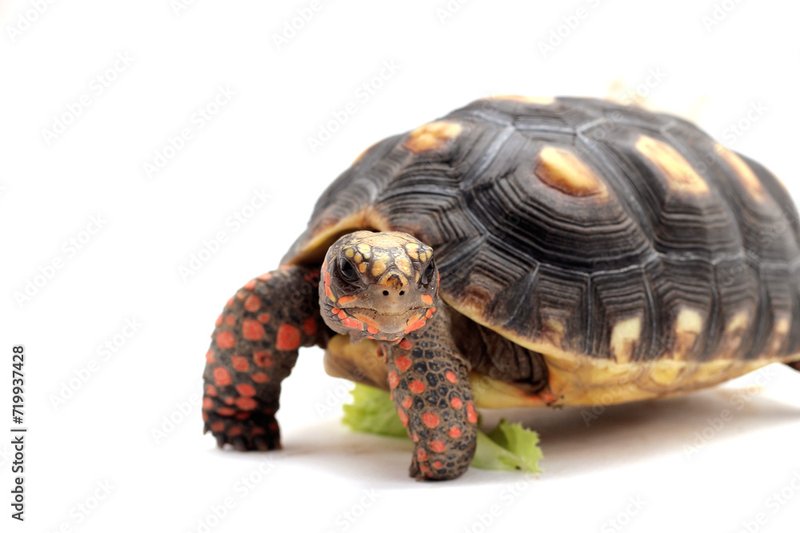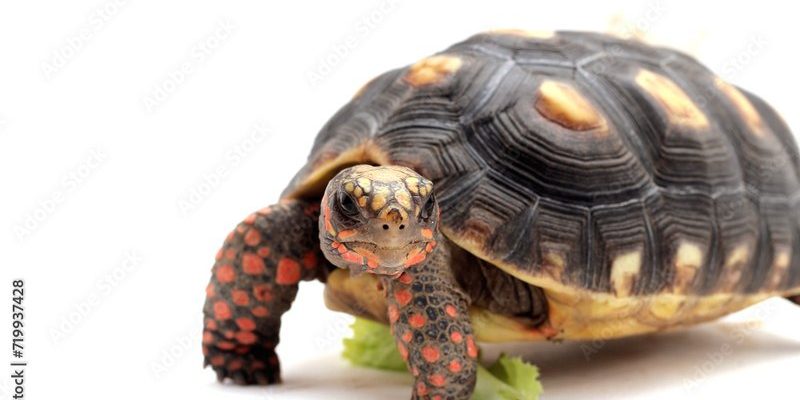
Imagine a slow-paced life, where your pet isn’t just a companion but a fascinating little creature that moves at its own speed. Caring for a red-footed tortoise can feel like adding a slice of nature to your life, but it does come with some responsibilities. Let’s dive into whether this colorful tortoise can be a part of your home, especially if you’re just starting out in the world of reptile care.
Understanding the Red-Footed Tortoise
The red-footed tortoise (Chelonoidis carbonarius) is native to the tropical forests of South America, particularly countries like Brazil, Guyana, and Venezuela. What’s so special about them is their striking red and yellow markings on their legs and shell, which make them a standout among tortoise species. You might say they’re like little living jewels that bring a splash of color to your day!
Unlike some tortoise species that can get quite large and require extensive space, red-footed tortoises typically reach around 10 to 14 inches in length. This manageable size can make them easier to accommodate in your home, especially if you don’t have an enormous backyard. Here’s the thing: their manageable size doesn’t mean they’re low-maintenance. They have specific dietary and habitat needs that you’ll need to meet to keep them happy and healthy.
What Do They Eat?
Feeding your red-footed tortoise is part art, part science. These tortoises are primarily herbivores, which means they thrive on a diet rich in greens. They love a variety of leafy vegetables, fruits, and even some flowers. Think of it as preparing a vibrant salad bar specifically for your tortoise. Here are some popular choices:
- Dark leafy greens (like collard greens and dandelion greens)
- Fruits (like strawberries, papaya, or mango, in moderation)
- Edible flowers (like hibiscus or nasturtium)
But keep an eye on those fruits, as sugar levels can spike if you overdo it. You might wonder why their diet matters so much. Well, feeding them a balanced diet is crucial for their overall health and can prevent common ailments like shell deformities.
Choosing the Right Habitat
When it comes to creating a home for your red-footed tortoise, think of it like setting up a tropical oasis. These tortoises need a warm, humid environment to thrive. If you’re in a cooler climate, you’ll need to provide a proper setup with heat lamps and humidity gauges.
Start with a spacious enclosure. A good general size is at least a 40-gallon tank, but bigger is always better. You want to create places where they can hide, bask in the warmth, and roam around. Adding a substrate like coconut coir or organic soil not only gives them a place to dig but also helps maintain humidity.
Keep in mind, they love to soak! A shallow dish of water should be available at all times so they can hydrate. You might find yourself watching them enjoy their bath time, and it’s quite the sight!
Temperature and Lighting
Maintaining proper temperature and lighting is a crucial part of your tortoise’s care. During the day, aim for a basking spot of around 90°F and a cooler area of about 70°F. This allows your tortoise to thermoregulate effectively.
For lighting, a UVB light is essential to help them synthesize vitamin D3, which is vital for shell health. You’ll want to replace this bulb every six to twelve months, depending on the manufacturer’s guidelines. It’s a bit like providing your tortoise with sunshine; they need it for a healthy life!
Handling and Bonding with Your Tortoise
You might be wondering how to build a bond with your new pet. While tortoises aren’t exactly the cuddly type, they can learn to recognize you over time. When handling your red-footed tortoise, always support their body properly—this helps them feel safe and secure.
Start with short sessions of handling a few times a week. When your tortoise becomes more comfortable, you can gradually increase the time. Just remember, patience is key! You’ll find that your interactions can become quite rewarding as you learn their quirks and preferences.
Common Health Concerns
Like any pet, red-footed tortoises can face health issues if not properly cared for. One common problem is respiratory infections, often caused by inadequate temperature or humidity. You might notice signs like wheezing or a runny nose—if you do, it’s time to consult a vet experienced with reptiles.
Another concern is shell health. A malnourished tortoise may develop shell deformities, making a balanced diet essential. Regular check-ups can help catch these issues early. Think of it as regular tune-ups for a car; it keeps everything running smoothly.
Cost and Commitment
Before jumping into red-footed tortoise ownership, it’s essential to consider the finances involved. The initial cost of the tortoise itself can vary, but don’t forget to factor in habitat setup, food, and veterinary care. While they can be relatively inexpensive compared to other pets, the ongoing costs can add up over time.
Also, be prepared for a long commitment. These tortoises can live for several decades—often over 50 years! Owning one of these delightful creatures is a lifelong journey, similar to starting a new chapter in your life.
Alternatives to Consider
If you’re still on the fence, consider other beginner-friendly tortoises or reptiles. The Greek tortoise or sulcata tortoise might also be good options, each with their unique attributes. They might differ in care requirements, but they share that same mesmerizing charm.
Ultimately, whether you choose a red-footed tortoise or another species, make sure to do your homework. Choosing the right pet for your lifestyle is essential for both you and the creature.
So, is the red-footed tortoise good for beginners? The answer is yes—if you’re ready for the commitment. They can offer companionship and beauty, but they do require thoughtful care. With the right setup, diet, and love, you can help your red-footed tortoise thrive. If you’re prepared to provide the right environment, these charming tortoises can bring joy into your life for many years to come.

